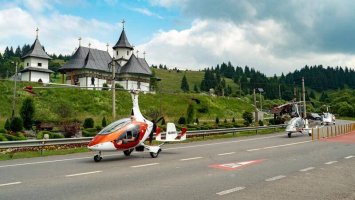I recently recieved an email from AutoGyro that contained this link:-
AutoGyro chat
I focused upon the GyroMotion and looking at the picture of the Calidus driving around the highway and wonder just what work has been done to consider the stresses on those rotor blades and how it might affect their life...

AutoGyro chat
I focused upon the GyroMotion and looking at the picture of the Calidus driving around the highway and wonder just what work has been done to consider the stresses on those rotor blades and how it might affect their life...

